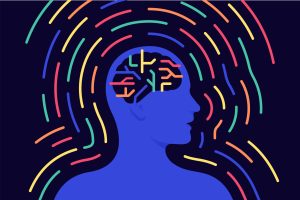When Federal Reserve spokespeople, members of the mainstream media, and politicians talk about it to the public, they speak of inflation as if it’s some very hard to predict variable that is somewhat difficult in terms of policy decisions needed to fight, and very difficult in terms of hardships that must be inflected on the bottom 99% to fight. In this article we will explore what actually is inflation, what drives it, why hiking interest rates grossly exacerbated it, and the only real way to fight it.
What really is inflation and what drives it?
There are four types of industries that all businesses (note the distinction between “businesses” and “companies” here) fall into: primary, secondary, tertiary, and services. Primary industries are raw materials, secondary industries are where they combine and refine those raw materials to create economic value, and tertiary industries are the salespeople. Putting services aside for a second, when humans first appeared on earth, all of the assets that we have today were in their primary industry forms as the earth’s natural resources. Since that time, through generations of compounded human ingenuity, we have created considerable economic value and our economy, with money in it, as we know it today.
Now if we were to take all of the assets in the world across those three industries, and as well all prepaid service assets in the economy and divide them by the total amount of currency in the world valuated in US dollars, that would give us the purchasing power of a dollar.
Inflation is the dilution of that purchasing powers, and it’s driven by three factors:
1. The amount of money being added into the economy
2. The amount of money in the economy that’s being transacted with
and 3. The creation of new economic value in the economy which causes asset values to increase and prices to decrease (which is represented in conventional economic theory as “productivity”).
What “rate hikes” are, and why they have zero benefit, and grossly exacerbates inflation
Let’s start off by explaining something: central banks are private companies that are not owned by our the governments of our countries, and that over a our governments under duress have delegated their money printing authority to, and all government activities are financed through debt loaned to our governments by them, that they make payments on through our tax dollars. A country should never delegate their money printing authority to any non government entity, nor charge any interest on it’s currency issuances—let alone charge interest on behalf of a private actor, but we find ourselves in a situation where it has already been done for us, and one that we must abolish.
And so, what “rate hikes” are, is these central banks arbitrarily deciding to increase the interest rate on our governments national deficits, which means increasing the percentage composition and payment size of the interest—or pure profit, portion of our governments payments of our tax dollars to them.
If you pay $100,000 a year in taxes, your government should be investing and getting an ROI on that $100,000, and if they wanted to be able to pay you say $120,000 back next year (and believe me when I tell you that it can be even more—and …a lot, even more lucrative than that).
Instead what’s happening is off the top that $100,000 becomes say $90,000, and that’s only it’s first landing in their web of corruption.
To suggest that increasing interest rates is a good way of fighting inflation is no different than saying that taking $10,000 each from every person that comprises the bottom 99% of earners is a good way of fighting it, because they’ll have less money, and spend less, and therefore less dollars will be transacted with in the economy, since the federal reserve will keep the money on their balance sheet, and they’ll have more financial pressure on them to lower the magnitude of the dollars they transact with.
The only real way to fight inflation
Going back to the three factors that drive inflation:
1. The amount of money being added into the economy
2. The amount of money in the economy that’s being transacted with
and 3. The creation of new economic value in the economy which causes asset values to increase and prices to decrease (which is represented in conventional economic theory as “productivity”), the only one of those that we need to control to fight inflation is the new amount of money being put into the economy. Because productivity naturally and acceleratingly augments asset values and decreases prices over time, if you stop adding new money into the economy, bring interest rates down to zero, and wait, that will completely stop inflation, and then you can start adding new money into the economy (and distribute it in a manner that is good for the economy, rather than the private owners of the Fed) and increase it again as you please, and with complete control.










